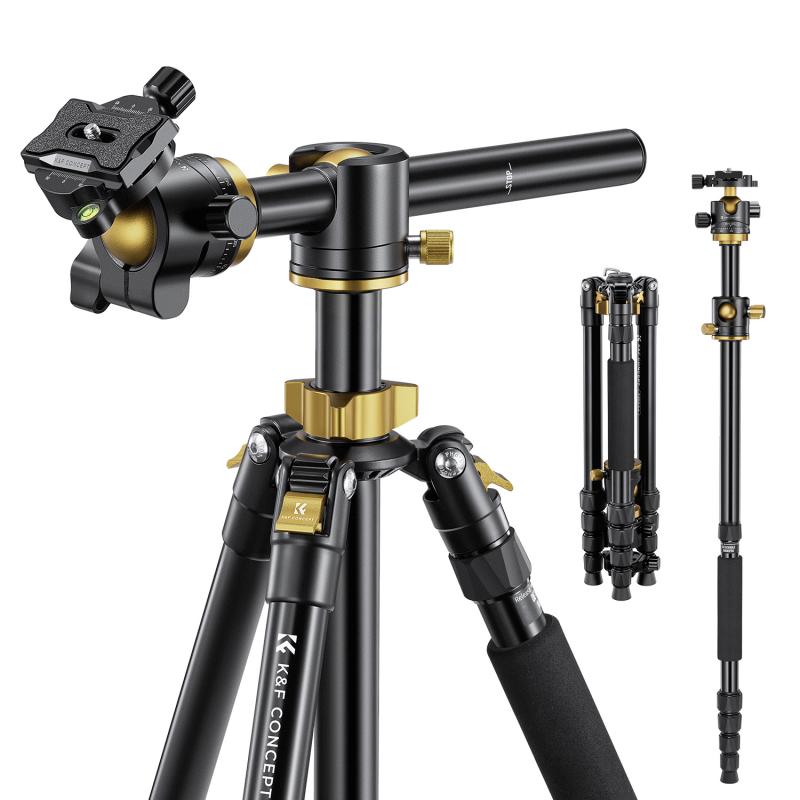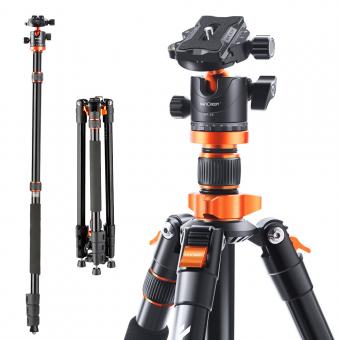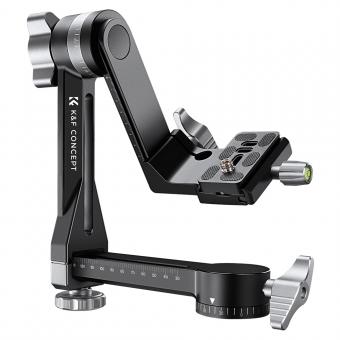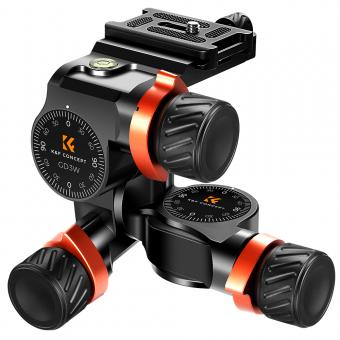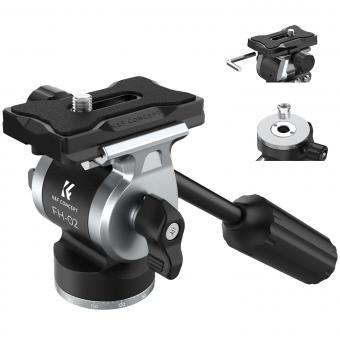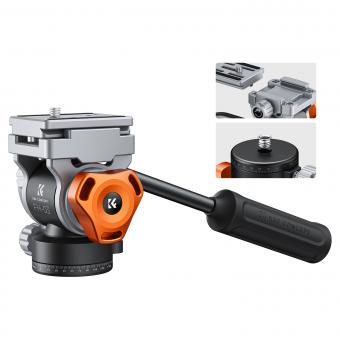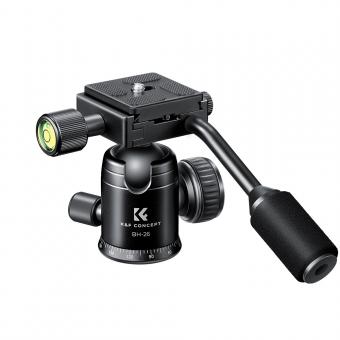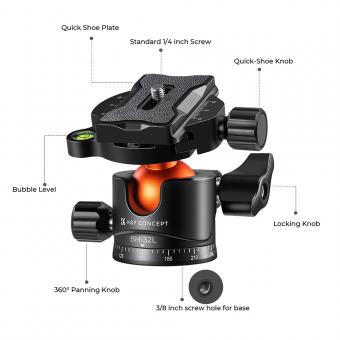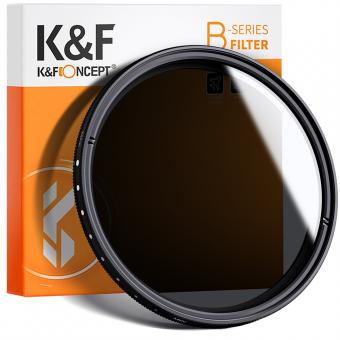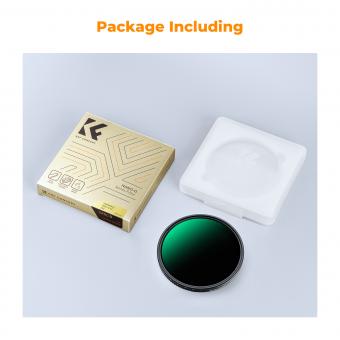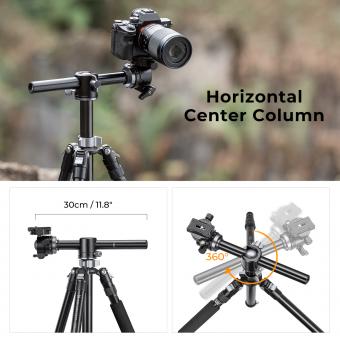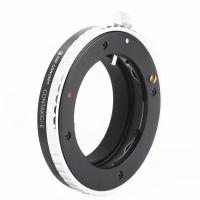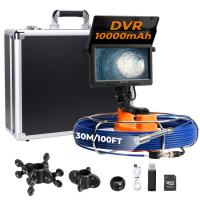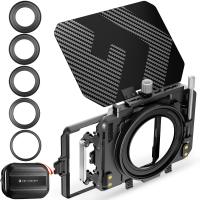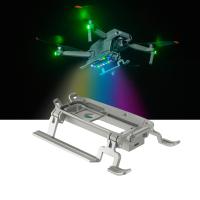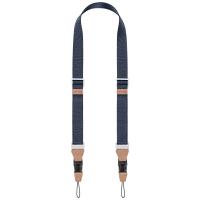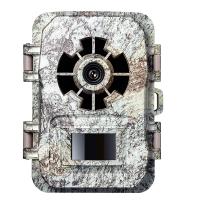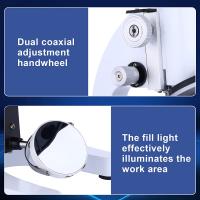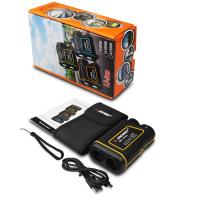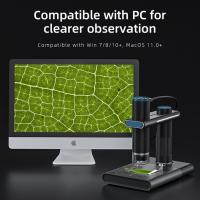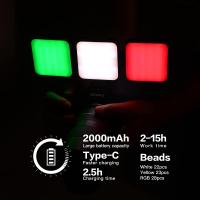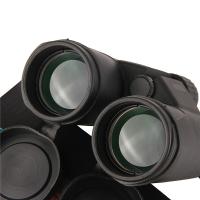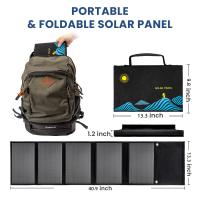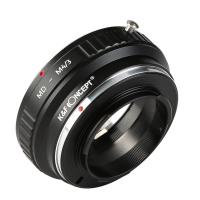How To Use A Ball Head Tripod ?
To use a ball head tripod, first, attach the tripod plate to the bottom of your camera or device. Then, slide the plate into the ball head's quick release clamp and tighten it securely. Adjust the ball head by loosening the locking knob, allowing you to freely move the camera in any direction. Once you have positioned the camera as desired, tighten the locking knob to secure it in place. Use the ball head's panning base to rotate the camera horizontally. To adjust the tilt angle, loosen the tilt lock knob and tilt the camera up or down. Once you have achieved the desired angle, tighten the tilt lock knob to lock it in place. Finally, adjust the tripod legs to the desired height and lock them in position. Make sure the tripod is stable before releasing your camera.
1、 Adjusting the ball head for precise camera positioning
Using a ball head tripod is a great way to achieve precise camera positioning and capture stunning photographs. Here's a step-by-step guide on how to use a ball head tripod effectively:
1. Mounting the camera: Start by attaching your camera to the ball head tripod. Most ball heads have a quick-release plate that attaches to the camera's tripod mount. Securely tighten the plate to ensure the camera is stable.
2. Adjusting the ball head: The ball head consists of a ball and socket joint that allows for smooth movement in all directions. Loosen the main locking knob to freely move the camera. This allows you to adjust the camera's position horizontally, vertically, and even tilt it at different angles.
3. Leveling the camera: Use the built-in bubble level or the camera's electronic level to ensure the camera is perfectly level. This is crucial for capturing straight horizons and avoiding tilted images.
4. Locking the ball head: Once you have positioned the camera as desired, tighten the main locking knob to secure the ball head. Make sure it is tight enough to hold the camera steady but not too tight that it restricts movement.
5. Fine-tuning adjustments: Many ball heads have additional knobs for fine-tuning adjustments. These knobs allow you to control the friction or tension of the ball head, making it easier to achieve precise positioning. Experiment with these knobs to find the right balance between stability and flexibility.
6. Testing stability: Before taking a shot, gently nudge the camera to ensure it is securely locked in place. If there is any movement, readjust and tighten the ball head as needed.
The latest point of view on using a ball head tripod emphasizes the importance of stability and precision. With advancements in technology, some ball heads now offer more advanced features like panoramic rotation, panning bases, and even built-in levels. These features enhance the overall functionality and versatility of the tripod, allowing photographers to capture a wider range of shots with ease.
Remember, practice makes perfect when it comes to using a ball head tripod. Experiment with different angles, heights, and positions to find the best composition for your photographs. With time and experience, you'll master the art of using a ball head tripod and elevate your photography skills to new heights.
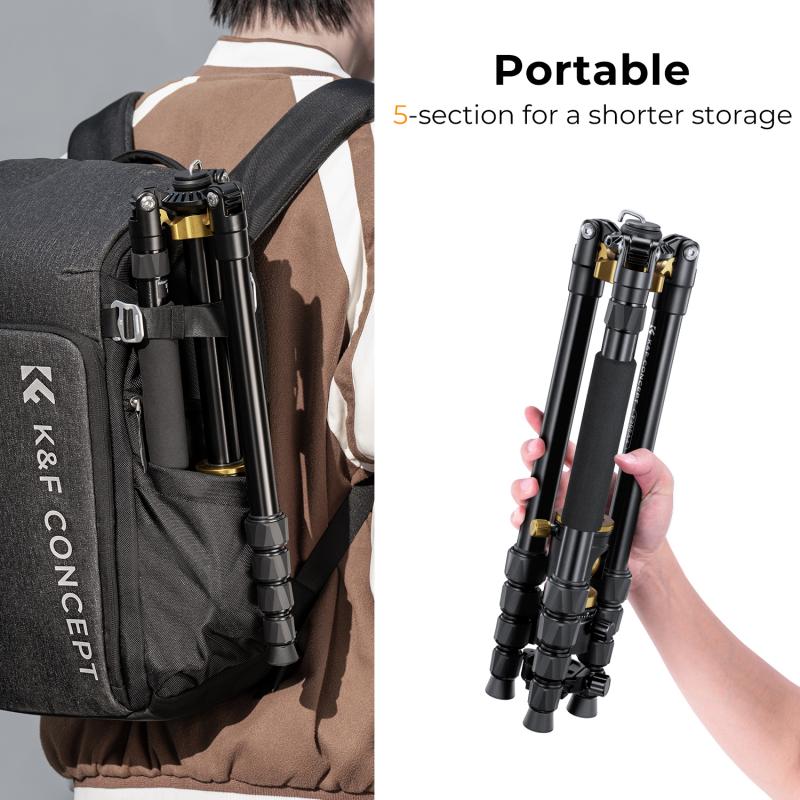
2、 Mounting and securing the camera on the ball head
To use a ball head tripod, the first step is to mount and secure the camera on the ball head. Start by loosening the locking knob on the ball head to allow movement. Then, attach the camera to the quick release plate, which is usually included with the tripod. The plate typically has a screw that fits into the camera's tripod mount. Tighten the screw securely to ensure the camera is firmly attached.
Once the camera is mounted, position it in the desired direction by adjusting the ball head. The ball head allows for smooth and precise movement, making it easy to frame your shot. To do this, hold the camera with one hand and use the other hand to adjust the ball head. The ball head usually has a control knob that tightens or loosens the ball joint, allowing you to move the camera freely or lock it in place.
When you have framed your shot, tighten the locking knob on the ball head to secure the camera in position. This ensures that the camera remains steady and stable during the shoot. It is important to tighten the knob sufficiently to prevent any accidental movement or slippage.
The latest point of view on using a ball head tripod emphasizes the importance of stability and precision. With advancements in technology, ball heads now offer smoother movements and better locking mechanisms. Some ball heads even have friction control, allowing you to adjust the tension of the ball joint to suit your needs. This ensures that the camera stays in place even when shooting at different angles or in windy conditions.
In conclusion, using a ball head tripod involves mounting and securing the camera on the ball head, adjusting the position using the ball joint, and tightening the locking knob to ensure stability. The latest advancements in ball head technology have made it easier than ever to achieve precise and steady shots.
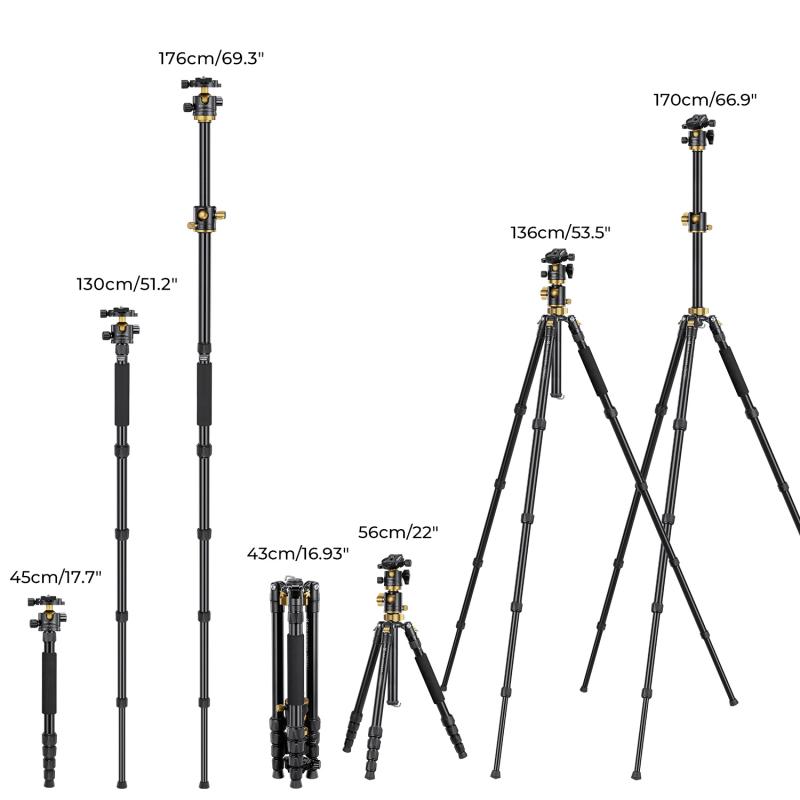
3、 Using the ball head to achieve smooth panning shots
Using a ball head tripod is a versatile and essential tool for photographers and videographers. It allows for smooth and precise adjustments, making it easier to capture the perfect shot. Here's how to use a ball head tripod effectively:
1. Mounting the camera: Start by attaching your camera to the ball head using the quick release plate. Ensure it is securely fastened to prevent any accidental slips or falls.
2. Adjusting the ball head: Loosen the main locking knob to allow free movement of the ball head. This enables you to position your camera in any direction or angle. Once you have the desired composition, tighten the knob to lock the ball head in place.
3. Leveling the camera: Many ball heads have a built-in bubble level or a leveling base. Use these features to ensure your camera is perfectly level. This is particularly important for landscape or architectural photography.
4. Achieving smooth panning shots: To capture smooth panning shots, loosen the panning knob located at the base of the ball head. This allows you to rotate the camera horizontally while keeping it stable. Gradually increase or decrease the tension of the panning knob to control the speed of the pan.
5. Fine-tuning adjustments: The ball head also allows for precise adjustments in all directions. Use the smaller knobs or dials to make minor changes to the camera's position, such as tilting or rotating it slightly.
The latest point of view on using a ball head tripod is the increasing popularity of models with friction control mechanisms. These allow photographers to adjust the tension of the ball head more precisely, resulting in smoother movements and improved stability. Additionally, some ball heads now come with panoramic scales or indicators, making it easier to replicate specific camera positions or angles.
Remember, practice is key to mastering the use of a ball head tripod. Experiment with different settings and techniques to achieve the desired results.
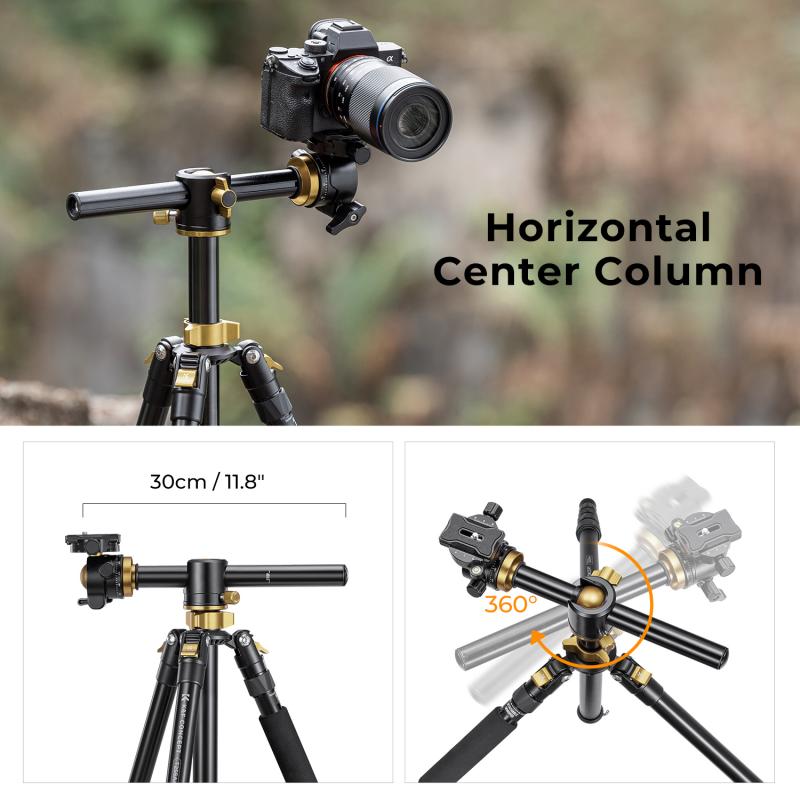
4、 Locking and unlocking the ball head for stability
To use a ball head tripod effectively, it is important to understand how to lock and unlock the ball head for stability. The ball head is the part of the tripod that allows you to adjust the angle and position of your camera.
First, ensure that your tripod is set up on a stable surface. Extend the legs to the desired height and make sure they are securely locked in place. Once your tripod is set up, you can attach your camera to the ball head using the quick release plate or the screw mount.
To adjust the position of your camera, loosen the ball head by turning the locking knob or lever. This will allow the ball to move freely. You can then position your camera by tilting it up, down, or sideways. Once you have achieved the desired angle, tighten the locking knob or lever to secure the ball head in place. This will prevent any accidental movement or camera shake.
It is important to note that different ball heads may have slightly different mechanisms for locking and unlocking. Some may have separate knobs for adjusting the tension of the ball, while others may have a single knob that controls both the tension and locking. It is recommended to refer to the manufacturer's instructions for your specific ball head model.
In recent years, some ball heads have introduced additional features such as friction control, panoramic rotation, and panning base. These features allow for smoother and more precise adjustments, especially when shooting panoramic or landscape images. Familiarizing yourself with these additional features can greatly enhance your shooting experience.
In conclusion, mastering the locking and unlocking mechanism of a ball head tripod is essential for achieving stability in your photography. By understanding how to properly secure the ball head, you can confidently position your camera and capture stunning images without any unwanted movement.
